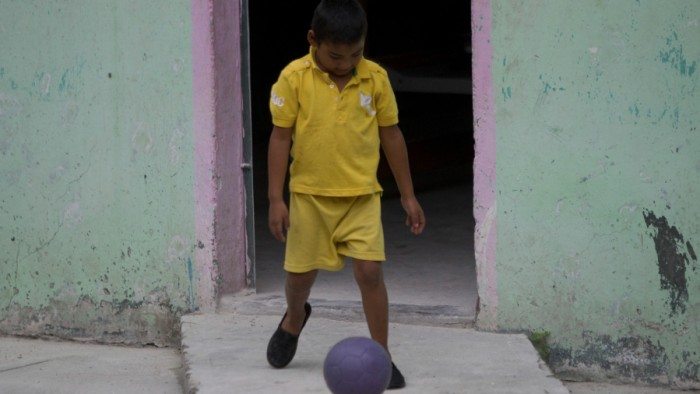

A boy in San Pedro Sula, Honduras (Comisión Interamericana de Derechos Humanos/Flickr)
Upon reading Sonia Nazario’s August 11 opinion piece in The New York Times, “How the Most Dangerous Place on Earth Got Safer,” I felt extreme outrage at Nazario’s construction of an imagined Honduras, one that “is safer” with United States assistance programs.
Nazario clearly missed the mark.
As a result, I felt the need to contextualize the banality of safety in Honduras and specifically the reality of the Rivera Hernández sector within San Pedro Sula, the focus of Nazario’s piece.
First, Nazario takes the Rivera Hernández sector out of its historical context—one in which U.S. footprints and the deeply embedded problems of Honduras’ poor governance and corruption are not easily obscured. By telling the stories Nazario has selectively chosen, she misses the dominant reality that the region is bathed in corruption and violence (rampant throughout all echelons of government), which allow for the narcotrafficking and gang regime to exist in the first place.
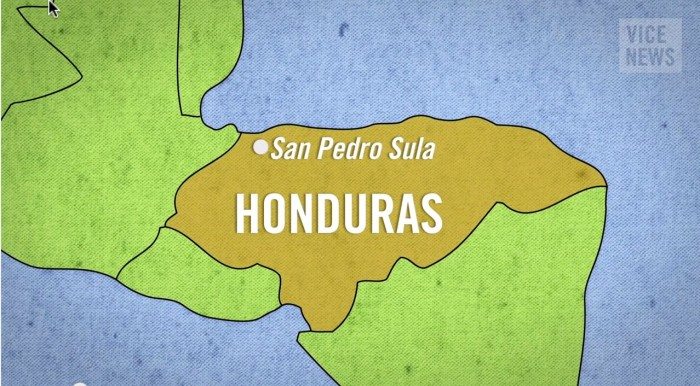

The Rivera Hernández sector is part of the ever-expanding outskirts of the city of San Pedro Sula, populated by those who could not afford to live in the city and migrated from rural areas to the city, ending up in neighborhoods in outlying areas like this, or others like it.
These neighborhoods feed the maquiladora machine with young women workers who satisfy back-to-school sales in the U.S., or the banana packing houses that supply First World breakfast tables. During Hurricane Mitch in 1998, the water reached rooftops here, and many lives were devastated. Here, my uncle weathered Mitch, which left him with a permanent skin disease, and deep trauma after losing everything, including his house. My cousin also taught here for many years, where the school paid a gang war tax, and teachers paid tolls to come in and out of the neighborhood. The police did nothing to prevent any of the business dealings of gangs.
Using cherry-picked stories of the Rivera Hernández sector, Nazario’s piece claims that Honduras is “a bit more safe” because of U.S. assistance programs, when all evidence demonstrates that the country has fallen into a state of lawlessness and impunity since 2009.
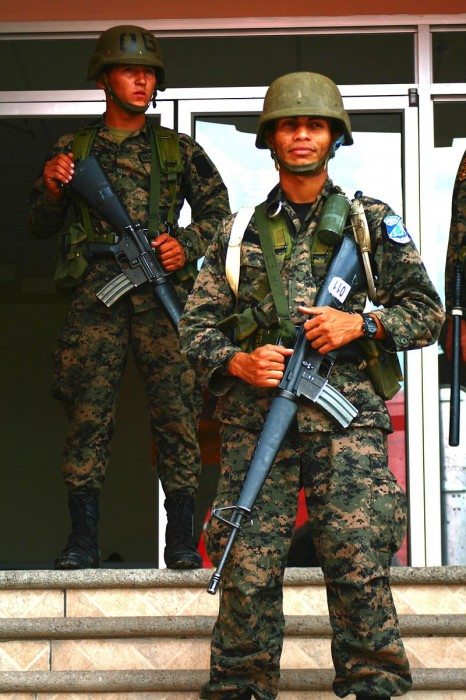

June 29, 2009 in Honduras (Yamil Gonzales)
In fact, in local papers every day, there is news of violent murders in San Pedro Sula or Tegucigalpa. According to the government’s own reports, from January to July, 917 people were murdered. Within a week of my recent visit to San Pedro Sula in July, four transgender women were murdered, a community organizer was killed and a transgender woman fled the country to escape death threats—all blocks away from where I was staying.
That same week, the president’s wife was quoted saying that she was sending her daughter to the United States “the regular way” and not with a coyote (smuggler), leaving the vast majority of Hondurans feeling like they are living in a parallel universe where escape to the U.S. is either a death wish or a pipe dream. Clearly, this elite Honduran woman, representing the highest office in the land, just does not understand the problem of migration and the common and dangerous challenges most would-be migrants or refugees face in obtaining visas and safe passage.
Nazario’s article also fails to address the human rights violations that plague Honduras, or the links of a wide variety of government officials with narcotraffickers, which make dealing with the corrupt government often as barbaric as dealing with local gangs. Nor did Nazario mention that to truly stem the migration of Hondurans to the United States., structural change is required, along with the return of thriving participatory democratic systems not controlled by U.S. surveillance and aid.
Despite the U.S. ambassador’s assertion that providing soccer uniforms and coffee for funerals through local religious groups is “not charity,” contextualizing the Rivera Hernández sector shows it is just that, charity à la the United States, that is to say, with a heavy dose of U.S. self-interest.
These assistance programs provide “services” that do not lead to real transformation but rather dependency. This is charity disguised as the enduring form of political opportunism practiced by the U.S. throughout the region and the world, after its participation in debunking democratic governing institutions and rebuilding governments in its own image. Honduras is what it is now —a violent country plagued by political and economic corruption— in significant measure because of U.S. foreign policy under Secretary of States Hillary Clinton during the 2009 coup, on top of inhumane calls to deport the Central American children at the border.
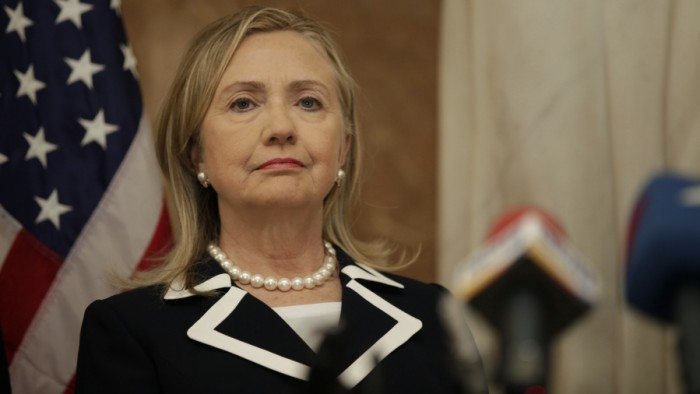

(State Chancellery of Latvia/Flickr)
Nazario’s piece whitewashes the deadly involvement of the United States in Honduras and the region, effectively erasing history. Hondurans do not need more U.S. intervention, they need to be free to elect a progressive government where citizens’ voices are heard and they feel they are part of the future and direction of their nation.
Right now, Honduran citizens are trying to flee from a life of instability generated by the 2009 coup, and the neoliberal policies promoted by the Juan Orlando Hernández regime. While Nazario promotes small charity programs as successful models that are needed in greater number and reach, the reality is that unless there is a purging of crooked government officials, starting with crooked cops and military police, Honduras will remain with more of the same violence.
While U.S. Immigration and Customs Enforcement (ICE) officials are seeing a decrease in border crossings from Central America, they themselves acknowledge the numbers are still high, with 28,808 deportations this year. It is not because small charity programs are working in Honduras that numbers have decreased, but rather because of increased policing and apprehensions in Mexico, which is resulting in the diversion of children before they get to the U.S. The United States is providing funds to the Mexican government to deport Central American migrants, as the perilous journey through Mexico has become even more costly, while Mexican immigration authorities also engage in exploitation of minors. In fact, the deportations of Central Americans from Mexico increased dramatically to 118,000 from January to September of 2015.
Honduran migration to the United States began as early as the turn of the 20th century, reaching its height after Hurricane Mitch in 1998 and after the neoliberal policies of the 1990s and early 2000s. But Honduran migration reached acute levels post-2009. Data from the Autonomous Universities’ Violence Observatory-UNAH shows that 2011 (two years after the coup) were the most violent years. The escalating violence and local corruption led the forced migration of women and children to the U.S.-Mexico border.
Nazario’s skewed analysis of U.S. assistance programs to churches, those in alignment with Orlando Hernández’ rhetoric, seems like an attempt to validate the role of the State Department in the destabilization of the country in 2009.
Between 2009 and 2013, after the coup toppled the democratically-elected president, Honduras has been mired in ever-deeper corruption scandals leading up to the halls of the presidency and escalating human rights violations. In 2013, when Juan Orlando Hernandez —a proponent of neoliberal policies in line with U.S. businesses— muscled his way into the presidency (not by popular vote but by fraud), human rights violations increased as did local violence in general due to the empowering of police, military police and military forces throughout the region. Hernández’ first act in office was the installation of the military police, encouraged by the United States Embassy, which only served to embolden police abuse, and has generated civil and human rights violations throughout the country.
By 2013, there was a rise in violence to up 90.4 per 100,000 people, among the highest in the world. In order to adjust his image, the Hernandez regime changed how violent acts were reported to the UNAH’s Violence Observatory, no longer providing raw data from each police precinct, but submitting a centralized report from the National Police in Tegucigalpa (the country’s capital city) that summed up all the country’s violent deaths per month—a report that was often turned in late. Now, instead of having trained scholars deciphering raw data as reported per precinct, the data is presented by a central police agency, with untrustworthy and blind processes. Obscuring the raw data that scholars could analyze would certainly generate better numbers, again obscuring the reality. Nazario’s reports that violence decreased to 62 percent may be a reflection of the doctoring of numbers.
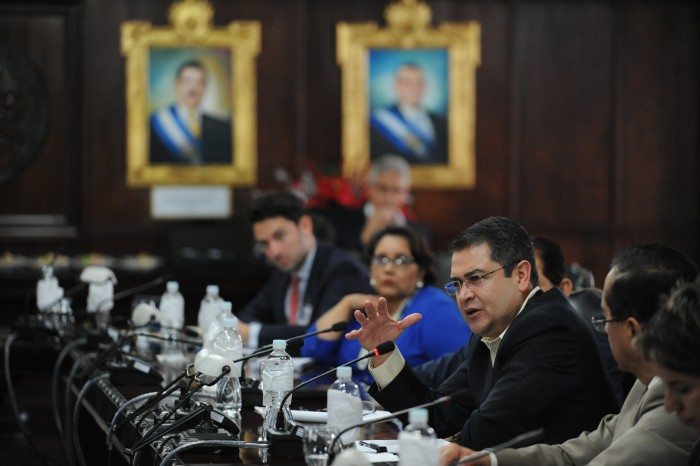

Juan Orlando Hernández, president of Honduras. Credit: Daniel Cima/CIDH (Source: Flickr)
Honduras has a clear and well-documented problem with investigation and prosecution of crimes, including homicides, and particularly politically motivated incidents. Furthermore, police at best lack training in assessment and reporting of crime scenes. At worst, police have been known to violate law enforcement regulations and procedures. For instance, tampering with the scene itself are issues reported, as we saw with the murder scene of Berta Cáceres, and also misreporting how the scenes are catalogued and written about.
Ultimately, crooked police and military police must be purged from the force. This is not happening, leaving citizens and human rights advocates in jeopardy. As I worked closely with a transgender man activist in San Pedro Sula, I was reminded of the precarious situation social activists and organizers face daily. He explained that he could not denounce all the violence. If he did it all the time, his life would be in danger. Sometimes it was better to just work closely with the investigative units until something could be done, but often the cases remain stalled. He speaks from the experience of losing members of his organization, some killed and some fleeing for their lives to seek asylum.
In 2015, evidence of corruption surfaced, implicating Hernández’s office and the Nationalist Party for stealing over 90 million dollars from the country’s social security administration. Despite protests, Hernández remained in office with no official investigation or prosecution. Instead, Hernández has imposed a blind tax on citizens for security, and he has made it so he is not required to report to the people how the funds are being implemented and used.
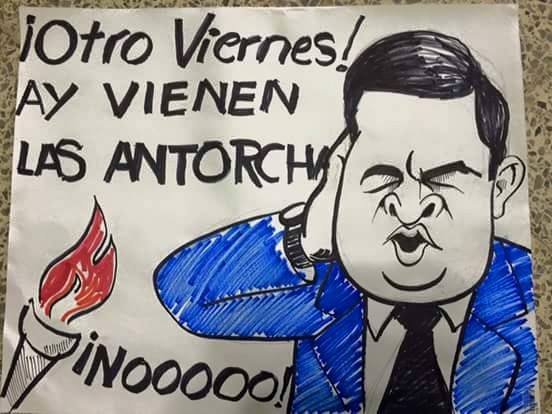

Credit: Anonymous Honduras
Honduras is not safer. It is rather a smokescreen to allow Hernández and his allies to continue benefitting from U.S. aid, primarily in the military.
It is appalling that Nazario is cheerleading this corrupt and murderous government.
Recently, Central American scholars analyzed the Hillary Clinton campaign’s doublespeak on the issue of asylum for Central American refugees, many of them children, women and LGBTI folks. The frustration of these scholars echoes across all of Latin America, as most experts and scholars agree that children are fleeing violence and economic insecurity and deserve shelter and asylum. They are not lying about the violence and economic insecurity they face. In fact, people are being detained in Mexico, facing inhumane conditions in detention and then kicked back to the Honduran border. Only to try again.
Nazario’s article provided a neoliberal argument for soft support, hand-me-downs and basic charity that sidestep the deeper structural changes needed in Honduras. While it is commendable and surely impactful that a community Baptist leader is working on the ground trying to improve his community, this is not a panacea for the larger problems—nor it is a comprehensive model that can be applied in blanket form in the entire country.
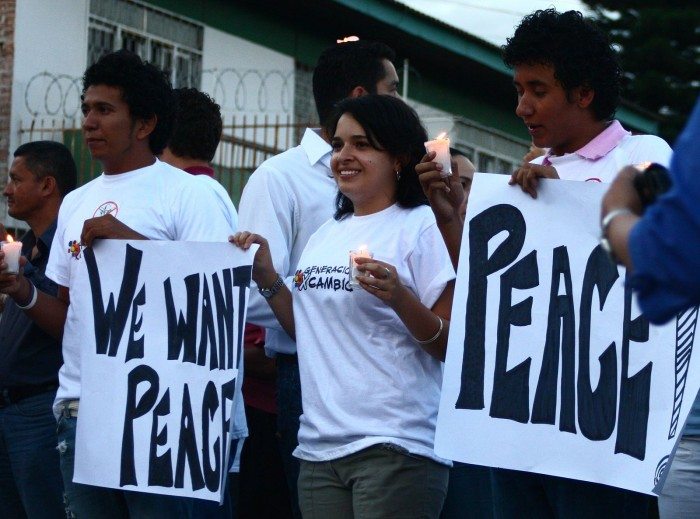

July 1, 2009 peace protest in Honduras. (Yamil González)
Lastly, there are Nazario’s lurid, glib and near pornographic descriptions of the brutality of violence:
“gangsters playing soccer with the decapitated head of someone they had executed”
“a game between Casa de la Esperanza team and of killers—20 sicarios, or assassins…” tiring out the gangsters so “they won’t kill anyone tonight”
a hacked-up body in a bicycle basket a young girl’s rape “for several days…and [her] screams as they cut her to death” and her blood being scrubbed from the floor”
Nazario’s prose is problematic for this very simple reason: she writes in graphic detail to achieve maximum effect, casting Hondurans as desperate and pitiable victims even as they are dehumanized. Even as Nazario describes a safer Honduras, she loads on the blood and terror that Hondurans and Central Americans have known too well.
Readers are led to be fixated on and fascinated by such violence, even as she claims it’s all better now (as if she is saying, “Look!” but then “Look away, nothing to see here—it’s all better.”) This is exactly the wrong message, and a contradictory one at that.
I caution Nazario and all of us to take a deeper look at such normalization of violence, a condition of violent neoliberalism and low-intensity warfare, which requires real and fundamental change.
The violence in Honduras is not trifling.
It is not fodder for First-World phantasmagorical shock value.
It is not a thing of the past.
And watching a Disney movie in one corner of one neighborhood and playing soccer with “killers and assassins” is not the change the people of Honduras need.
***
Suyapa Portillo is an Assistant Professor in Chicana/o Latina/o Transnational Studies at Pitzer College. Portillo is a co-founder of the May Day Trans Queer Contingent and works closely with organizations in Los Angeles and in Honduras to eradicate homophobia in the Latino/a community and to seek equality and inclusion of LGBTQ and LGBTI undocumented immigrants in larger movement for immigration reform. She tweets from @SuyapaPV.



After read a couple of the articles on your website these few days, and I truly like your style of blogging. I tag it to my favorites internet site list and will be checking back soon. Please check out my web site also and let me know what you think.
http://trio4d.com/
http://trio4d.com/promo-bagi-player-trio4d.html
http://trio4d.com/daftar-member.html
http://trio4d.com/cara-bermain-togel.html
http://trio4d.com/informasi-pasaran.html
http://trio4d.com/buku-mimpi.html